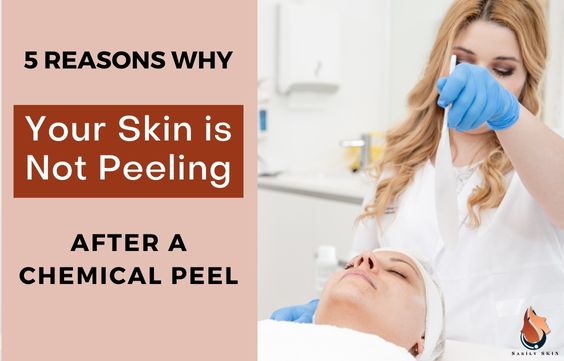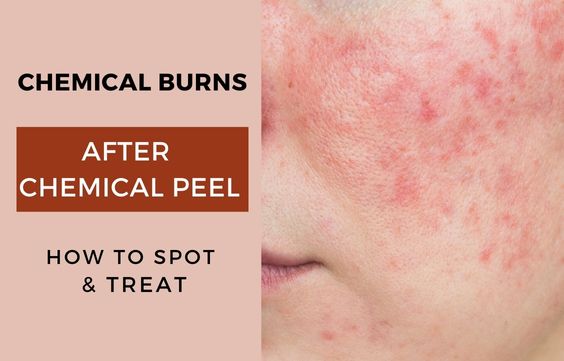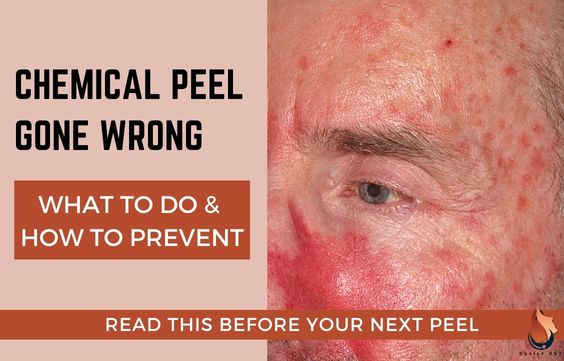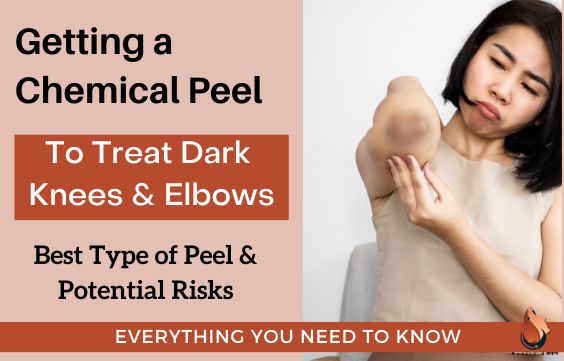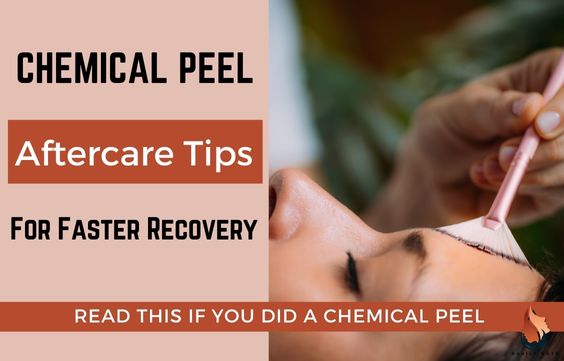Enzyme Peel: Benefits, Side Effects, Cost (Ultimate Guide)

We have heard all about chemical peels and how great they are for your skin. But did you know that there are also enzyme peels?
Enzyme peels are made from fruit enzymes that can be applied to your skin to improve its overall health! Amazing, right?
Now in this article, we will dive into enzyme peels to help you decide if it is right for you. We will discuss:
- What is an Enzyme Peel & Different Types
- Benefits, Drawbacks & Potential Side Effects
- What you can expect to pay for one
- How to DIY an Enzyme Peel at Home
- Chemical Peels Vs Enzyme Peels
What is an Enzyme Peel
An enzyme peel is a solution that uses real fruit enzymes to break down dead skin cells on the surface of the skin. They are more natural, and less irritating than chemical peels.
They are also much safer to use, especially on sensitive skin. They do not affect any of the living skin cells in the process of exfoliation and only remove the dead ones.
Fruits and vegetables such as pineapple, papaya, and pumpkin provide the enzymes utilized in enzyme peels.
These enzymes aid in the breakdown of proteins, particularly keratin proteins found in the skin’s outer layer. This helps in shedding dead skin cells, making the skin smoother and softer with fewer discolorations.
Benefits of Enzyme Peel
1- Immediately visible results
Enzyme peels are gentle but extremely effective at removing dead skin cells. The skin appears to be plump and radiant right away.
Even better, an enzyme peel requires no downtime, so it can be included in your daily skincare routine.
2- Improved texture and tone
The enzymes included in an enzyme peel have exfoliating capabilities that help to eliminate dead cells and loosen up dull skin, revealing smoother, more youthful skin beneath.
3- Easy to Apply
Enzyme Peels are really easy to apply and can be done right at home, unlike chemical peels which require a professional technician.
4- Allows for Better product absorption
Exfoliated skin is smoother and softer in texture, allowing for easier absorption of cleansers and masks, as well as better coverage with liquid and powder cosmetics.
5- Reduced Acne and Inflammation
Enzyme peels are especially beneficial for acne-prone skin since the gentle exfoliation helps to reduce the appearance of scars, smooth the skin, and speed up the healing of blemishes.
6- Helps Your Skin To Stay Moist
Most enzyme peels also help to hydrate and balance the pH level of your skin. Human skin should be mildly acidic with a PH of 4.7–5.7.
While this may appear unusual at first, keeping your skin mildly acidic is beneficial since the acid acts as a barrier. This barrier keeps harmful bacteria out of your body while also retaining moisture in your skin.
7 – No damage to living skin cells
Unlike chemical peels, which can harm living skin cells and cause irritation, enzyme peels merely remove dead skin cells from the top layer of the skin.
As a result, enzyme peels are suitable for almost all skin types.
8- Great for pregnant or breastfeeding women
Chemical exfoliation peels should not be used by pregnant or breastfeeding women since the harsh chemicals can easily be absorbed into the skin and cause injury to you or your child.
Fruit peel enzymes, on the other hand, contain no harsh chemicals or negative effects, therefore they are safe to use by pregnant or nursing mothers.
9- Affordable
Enzyme peels are usually cheaper than chemical peels, especially since many of them can be used by yourself, at home, and do not always require a visit to the clinic.
Disadvantages of Enzyme Peels
Even though enzyme peels have some great benefits, they are not perfect.
Enzyme peels don’t last as long as chemical peels or even some kinds of manual exfoliation
They don’t remove as many dead skin cells and don’t go as far into your pores as how a chemical peel would.
This is because enzyme peels are more gentle. To achieve identical results to a chemical peel, you’ll need to use an enzyme peel more frequently.
Enzyme Peels are temperature limited
You should only use enzyme peels at room temperature to get the best results.
This means that you should preserve enzyme peels properly and avoid exposing them to extremes of heat or cold. Otherwise, you risk jeopardizing the effectiveness of the peel.
Side effects & Contraindications of Enzyme Peels
Generally, enzyme peels are gentle and well-tolerated. The only considerable risk that is of immediate concern is an allergic reaction.
You should be sure that you are not allergic to any of the fruits or other substances being used in the formula of the enzyme peel.
Always do a patch test first before applying any peel or solution to your skin and face.
How much does an Enzyme peel Cost?
A good average reference for a professional enzyme peel is about $100-$200. While OTC peels can be bought from stores and used at home for as little as $15.
Like all peels and procedures, the cost of an enzyme peel will vary depending on:
- Whether you are having it done professionally or at home,
- The professional that is doing it,
- The kind of peel being used,
- And the preparation or aftercare that will need to accompany the treatment.
On the other hand, if you are making your peel at home, then you only need to buy the fruits and other ingredients that you will need.
How to Apply an Enzyme Peel
Each enzyme peel product will have its own unique set of directions for use. But generally, there are two main methods for applying and using enzyme peels.
1- Washing Method
For starters, apply the peel as if you were washing your face. The enzyme peel will be massaged into your skin in gentle circles to remove dead skin and clear your pores.
2- Face Mask
Enzyme Peels can be used as a face mask. You just need to apply the enzyme to your skin and leave on for a few minutes before rinsing off with warm water. Both strategies are straightforward to apply.
Recommended Enzyme Peels
I have two great recommended enzyme peels for you:
Elemis Papaya Peels is one of the most effective enzyme peels that you can buy over the counter. It is also super easy to apply, rub it on your skin and leave it for 15 minutes.
Now the main issue is that Elemis is a bit pricey but I think it’s worth a few extra dollars. You can click here to see the current price for a bottle on Amazon
If you want a more budget-friendly enzyme peel you can click here to see the price for Bliss Jelly Papaya-Pineapple Peel on Amazon.
Can you DIY Make an Enzyme Peel
You can make the enzyme at home yourself. But it won’t be as effective the same way as when professionals make it. Enzyme peels that can be bought over the counter are usually a combination of enzymes and other substances.
The store-bought peels are extracted from the fruits and combined in a lab in a specific way to ensure that the ingredients remain stable and effective.
However, many people make their single-use fruit masks at home. Many of them simply blend their fruits, adding aloe vera or yogurt for additional moisturization, and apply it to their cleansed face.
How to Make a Pumpkin-Papaya Enzyme Peel
If you want to make a pumpkin-papaya face mask, you can:
- simply clean and chop up a piece of pumpkin and a piece of papaya.
- Then, add the pieces to a blender with some yogurt or an egg to help hold the mixture together.
- Puree the mixture until smooth and apply to your face after cleansing.
- You can leave it on for 7-20 minutes and wash it off with water.
Many of the other fruit enzyme combinations are prepared in the same way at home.
Just be careful and do your research to best decide what fruits you should combine and what other ingredients you can add to get the most out of your mask while avoiding any allergic reactions.
How often can you do an enzyme peel?
On average, an enzyme peel is gentle enough to be used once a week.
However, it is best to follow the instructions of your particular peel for the best results. Different enzyme peel preparations will have different instructions.
How often you can use them will also depend on your skin’s reaction to the peel and the effects you are looking to achieve.
How long does it take to see results from an enzyme peel?
Generally, you will see a difference in your skin immediately after an enzyme peel. Your skin will look smoother, more hydrated, and have more of a glow to it.
However, if you are treating things like wrinkles, fine lines, acne and acne scars, hyperpigmentation, or other skin conditions, it may take multiple sessions before you see any visible difference in the conditions.
Types of Enzyme Peel
Generally, most enzyme peels are a blend of different fruit enzymes. The particular make-up of a peel will vary depending on the practitioner, brand, or personal preference.
The most common fruit enzymes and combinations used are:
Cherry Enzyme
This is a powerful antioxidant that also nourishes the skin as it exfoliates it.
Pumpkin-Orange Enzyme
Pumpkin enzymes are effective at stimulating cell turnover and it also contains vitamins C, and A, antioxidant carotenoids, and beta-carotene to help promote healthier skin.
Papaya Enzyme (Amazing exfoliant)
The enzymes in papaya are effective at breaking down the protein bonds that keep dead cells on the surface of the skin.
Raspberry-Peach Enzyme
Raspberry contains high levels of polyphenol antioxidant ellagic acid which soothes skin irritations and reduces inflammation. Whilst the peach aspect helps to soften and is aromatically relaxing.
Passionfruit Enzyme
For a serious boost of antioxidants, passionfruit enzymes are the perfect option. They contain compounds that help protect the skin from free radicals and repair itself from UV damage.
Blueberry Enzyme
Suitable for all skin types except rosacea and sensitivity. Blueberry brightens the skin and is great exfoliation for anti-aging.
They protect the skin from the damaging effects of free radicals associated with the aging process. They also contain vitamins C & E.
Pomegranate Enzyme
Perfect for aging, oily, or acne skin. Pomegranate is an excellent digestive fruit enzyme, which is also a potent antioxidant and skin brightener.
Coconut-Papaya Enzyme (Ideal for sensitive Skin)
This is the most gentle enzyme which is great for sensitive skin. Coconut and papaya enzymes dissolve dead skin cells, revealing healthy soft skin.
The small molecular structure of coconut allows for easy absorption through the skin giving it a soft, smooth texture. Ideal for dry, rough, wrinkled skin.
Lemon Zest Enzyme (Great to treat hyperpigmentation)
Suitable for normal and dry skin, sun-damaged skin, and hyperpigmentation. Lemon is the perfect antioxidant to fight free radicals and provide brightening effects to the skin.
Chemical Peel Vs Enzyme Peel
One of the most recommended treatments for skin is a chemical peel. Later on, we also discovered the more gentle version of a peel when we discovered that we could use fruit enzymes.
Chemical Peels and Enzyme Peels are both great for the skin. So what are the differences between the two?
1- Chemical peels use acids while enzyme peels use fruit enzymes
Chemical peels usually use AHA and BHA acids to remove layers of the skin during the exfoliation process. Enzyme peels, on the other hand, use natural enzymes that are extracted from fruits.
2- Chemical Peels are stronger than Enzyme Peels
Chemical peels penetrate all the layers of the skin to remove skin cells. while enzyme peels only remove dead skin cells from the uppermost layer.
This is because the fruit enzymes are so gentle, they do not penetrate the skin as deeply as chemical peels do, and they are not strong enough to cause any damage to skin cells that are still living.
3- Chemical peels need healing & recovery time while enzyme peels do not
Chemical peels produce controlled damage to the skin, basically resurfacing the skin.
Enzyme peels do not do this. Therefore, chemical peels induce inflammation for the skin to heal to its new state. Enzyme peels do not induce inflammation and do not require the skin to heal.
4- Certain types of Chemical peels cannot be used during pregnancy & breastfeeding, while enzyme peels can
Enzyme peels are made of natural ingredients that are usually safe for women who are pregnant and breastfeeding unless they are allergic to any of them.
Some types of Chemical peels are too harsh and are not natural. So, they may be harmful to mommy and baby.
Related Article – Can You Get a Chemical Peel When Pregnant or Breastfeeding
5- Chemical peels are more expensive than enzyme peels
chemical peels usually cost more because the ingredients used are more expensive.
They are also best done in a clinical setting and require more preparation before the procedure and more aftercare products. Enzyme peels are usually safe to be done at home and the peels themselves are much cheaper.
6- Chemical peels produce more side effects than enzyme peels
Chemical peels result in a wide variety of side effects such as; scaling and peeling, itching, redness, swelling, and inflammation and so much more.
Related article – What to Expect after a Chemical Peel.
Enzyme peels, on the other hand, seem to only carry the risk of allergic reactions occurring if you are allergic to any of the fruits or ingredients beings used in the peels.
You do not get the other side effects since the enzyme peel only removes dead skin cells.
7- The effects of a chemical peel last longer than the effects of an enzyme peel
Chemical peels make more drastic changes to the skin and so the effects last longer and tend to be more pronounced than the gentler enzyme peels.
Since enzyme peels do not affect the skin so deeply, the effects tend to ear off sooner and the process needs to be repeated more often.
Sources:

